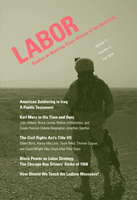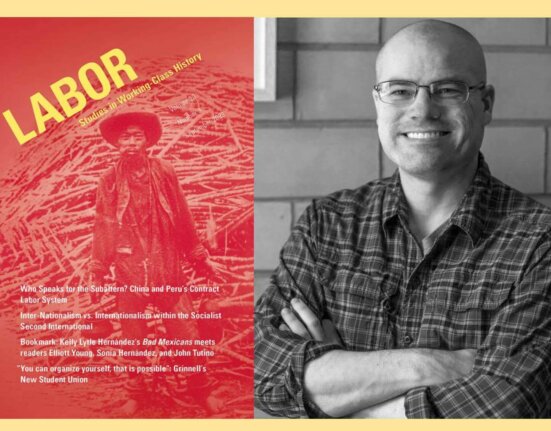In This Issue
The Common Verse
- Hugh Martin, “Iraq War, 2004”
LAWCHA Watch
- James N. Gregory, “Advancing the Ivory-Collar/Blue-Collar Partnership”
Up for Debate
- Eric Arnesen, “Introduction”
- Nancy MacLean, “The Civil Rights Act of 1964: The Difference a Law Can Make”
- Thomas J. Sugrue, ““The Largest Civil Rights Organization Today”: Title VII and the Transformation of the Public Sector”
- Touré F. Reed, “Title VII, the Rise of Workplace Fairness, and the Decline of Economic Justice, 1964–2013”
- Gavin Wright, “Title VII in Economic-Historical Perspective”
Articles
- Erik S. Gellman, “In the Driver’s Seat: Chicago’s Bus Drivers and Labor Insurgency in the Era of Black Power”
During the summer of 1968, hundreds of black bus drivers initiated two wildcat strikes in Chicago. These actions crippled the city’s bus routes and left hundreds of thousands of people without service. The strike was unusual because the drivers demanded more of their union than of the company. These Chicago Transit Authority employees protested the antidemocratic structure of the Amalgamated Transport Union, which they believed favored white employees and retirees despite a majority black workforce. As the strike made headlines and worried Mayor Richard J. Daley (and his plans for the Democratic convention), drivers formed alliances with community groups. Fusing the cause of economic justice with that of the Black Power movement, these drivers and their allies formed the Concerned Transit Workers (CTW) as a vehicle for their demands. In this article Erik Gellman addresses the following questions: How did Black Power advocates address economic injustice at work? And how does this case study change previous understandings of black and labor protests during the late 1960s? Historians have only begun to account for the late 1960s stream of black activism by focusing on affirmative action’s history from the local level, and Chicago is a vital case study for this approach because it has come to symbolize how whites in the urban North stymied southern civil rights activists when they tried to apply their nonviolent activism above the Mason-Dixon line. Many of these activists saw transit as a key urban space and sought to reverse deindustrialization and persistent job discrimination through black working-class nationalism, which provides a more complex and more contested vision of working-class Black Power as a potential remedy to the growing urban crisis in modern American cities.
Bookmark
- Rosemary Feurer, “Introduction”
In the Bookmark feature several commentators discuss University of Missouri historian Jonathan Sperber’s much-cited new biography, Karl Marx: A Nineteenth-Century Life in a scholarly exchange that originated in the Newberry Library’s fall 2013 Labor History Seminar. For those who have not yet had the pleasure of reading Sperber’s well-turned prose, Rosemary Feurer offers a useful précis. Then, historians John Abbott, Bruce Levine, Nelson Lichtenstein, and Susan Pearson share their spirited appreciations and critiques that inevitably involve political as well as historical judgments. Appropriately, Sperber has the last word.
- John Abbott, “Comments on Jonathan Sperber’s Karl Marx”
- Bruce Levine, “Marx Finds a Hostile Biographer”
- Nelson Lichtenstein, “The Revolutionary Marx”
- Susan J. Pearson, “The Secret to Success”
- Jonathan Sperber, “Response to Feurer, Abbott, Levine, Lichtenstein, and Pearson”
Collective Wisdom
- Jonathan Rees, “Beyond Body Counts: A Centennial Rethinking of the Ludlow Massacre”
This article is a review of the historiography of the Ludlow Massacre of 1914, beginning in the immediate aftermath of that tragedy and continuing to the present day. During the weeks and years following the massacre, union allies played up the deaths of innocent women and children to bring sympathy to their cause. Once historians began to place the tragedy in context, the victims at Ludlow ceased to be the center of the story. Jonathan Rees suggests that this change in focus distracts from the overall cause of trade unionism because the agency that miners exercised at Ludlow, particularly during the days immediately following the massacre, can inspire a new generation of activists.







